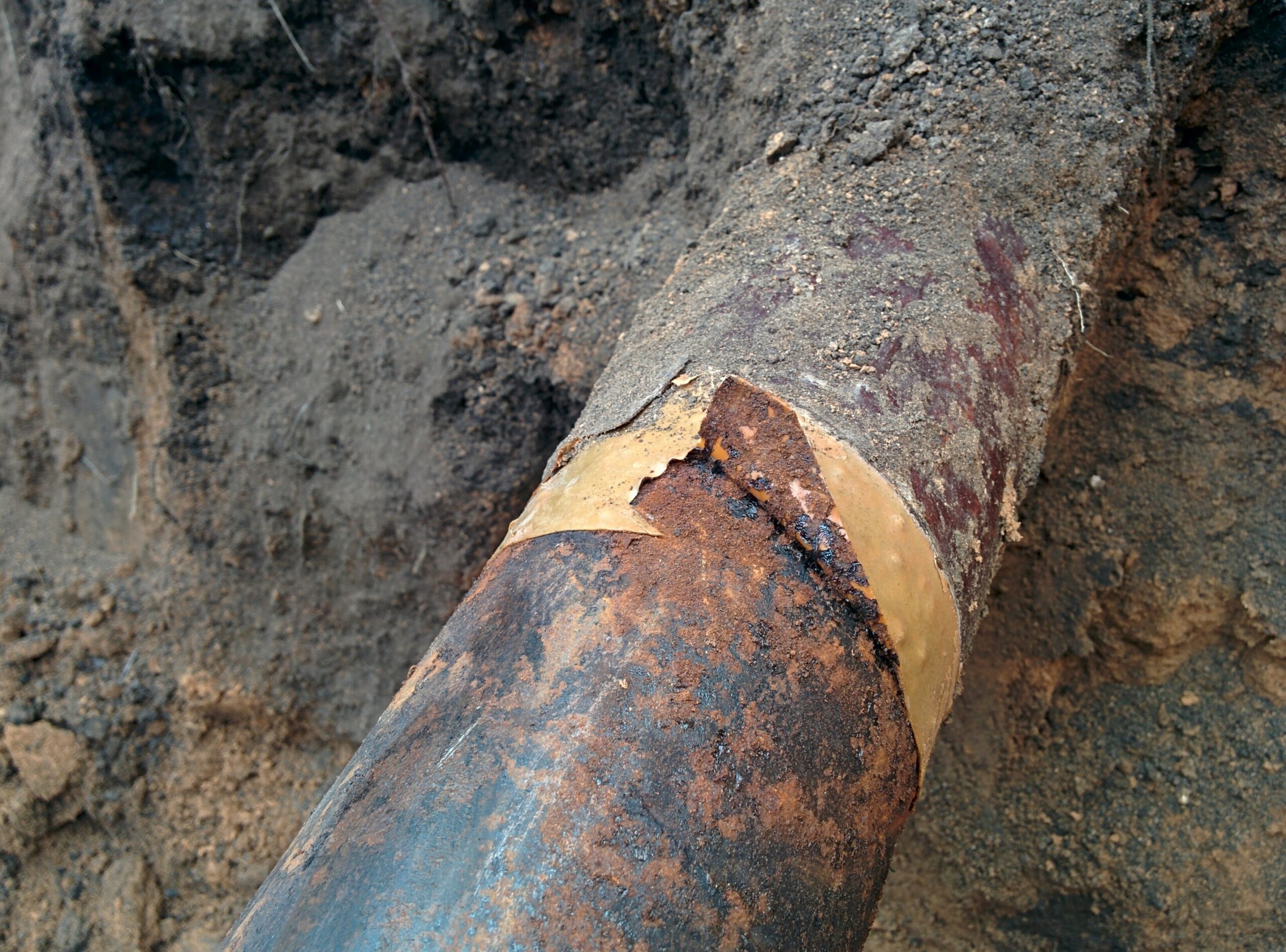Understanding and Avoiding Corrosion Under Insulation (CUI)

Pitting on the surface of stainless steel pipes can turn into pin holes that let gasses or fluids escape. That’s expensive and potentially dangerous, yet it’s easily prevented by carrying out insulation maintenance.
Insulation maintenance in industrial process plants is about checking for and preventing water ingress. That’s important for avoiding corrosion under insulation (CUI). Here’s what’s involved.
Insulating Process Pipes to Save Money
An uninsulated pipe carrying a hot fluid can lose up to 6,000 BTUs per hour per linear foot, according to the National Insulation Association®. That’s expensive, and it affects process efficiency, which is why process plant operators are usually eager to insulate pipes properly.
A second reason for insulating is to prevent condensation. This applies to cryogenic and refrigeration processes where the product being moved is at a temperature below the ambient dew point. If the pipe isn’t insulated moisture from the air will condense on the surface and cause corrosion.
The Water Penetration Problem
If the insulation gets wet, two things happen. First, it becomes dramatically less effective at preventing heat loss. Insulating materials provide millions of air pockets. Air is a very poor conductor of heat, which is how the material prevents heat transfer. Wet insulation conducts better, and in addition, more energy is used to heat and evaporate the water.
The second problem with wet insulation is that it promotes corrosion. When water penetrates the insulation around carbon steel pipes it develops ideal conditions for rust. As this happens under the insulation, it’s not visible until either the insulation is removed or a leak appears.
Stainless Steel Is Not Immune
Many process plants were either designed with or have adopted stainless steel pipes. Stainless is famous for not corroding, but insulation can change that.
Some material used for industrial pipe insulation contains chlorine and/or fluorine. When it gets wet moisture leaches-out chlorine and fluorine ions which are what do the damage. Even low concentrations can corrode stainless, particularly the austenitic grades. Dry insulation over stainless steel doesn’t suffer from this CUI problem.
Once the insulation is wet elevated temperatures contribute to the problem. Below 50° C chloride concentrations may not rise to a point where they will cause corrosion. Above 150° – 175° C the water evaporates, which prevents corrosion. Between these two temperatures is where the trouble arises.
Chlorine or fluorine-induced corrosion in stainless is different from that seen with carbon steel. Rather than oxidized flakes that lift off the surface, it forms pinholes. These deepen over time until eventually, they go all the way through.
Corrosion Under Insulation Prevention
There are five ways to prevent corrosion under insulation:
- Ensure the insulation stays dry by correctly installing weatherproof cladding over the top.
- Protect the cladding from damage.
- Use insulating material that satisfies the requirements of ASTM C795 and related standards.
- Schedule and carry out inspection and insulation maintenance
- Pipe treatment
Here’s more detail on each of these points.
Weatherproofing
Cladding should be interlocked and every joint sealed or caulked. Valves and tees are particularly difficult to weatherproof, but it’s worth making the effort to do so properly.
Protection
It’s not uncommon for people to climb up on cladding when they need to access valves or other areas. This deforms the cladding and leaves gaps for rain to enter through. Try to ensure people can’t or are told not to climb on it.
Insulating Material
ASTM C795, Standard Specification for Thermal Insulation for Use in Contact with Austenitic Stainless Steel, defines the requirements for insulation being installed over stainless pipes. The related standards, ASTM C692 and C871 define two tests for such insulating materials. These are the “28-d coupon test” and the “chemical acceptability test”. Insulation suitable for use with stainless steel pipework must pass both these tests.
Thermal expansion of insulation can also be an issue when it doesn’t match that of the pipe material.
For example, cellular glass insulating material has a similar coefficient of expansion to that of carbon steel. However, for cellular foam, the value is around nine times greater. That requires expansion gaps to be left, which provides more opportunity for water to enter and corrosion to start.
Insulation Maintenance
An insulation inspection should be performed immediately after installation, to verify the work was done to a sufficiently high standard, and periodically after that. Inspection frequency should be increased in areas of high rainfall or humidity and dampness. Coastal areas are a particular challenge.
Should any damage or joint failure be seen during the inspection, it’s important to put this right as quickly as possible.
Pipe Treatment
There’s some evidence that a layer of aluminum beneath the insulation can delay the onset of CUI. Some process plant operators, especially those in problematic coastal areas, are exploring the use of thermal sprayed aluminum on the pipework prior to insulating.
Industrial Insulation Maintenance Done Right
There’s no argument that pipe insulation lowers energy consumption and costs. The National Insulation Association estimates that US oil refineries alone are wasting the equivalent of 585,000 barrels of oil per day due to inefficient, poorly performing, or missing insulation.
However, insulating pipes also risk incurring CUI. This isn’t inevitable and it can be prevented. The key is to use the right material, install it correctly, and follow up with appropriate insulation maintenance.
Start by partnering with a company that understands industrial insulation and believes in, “Doing it Right.”